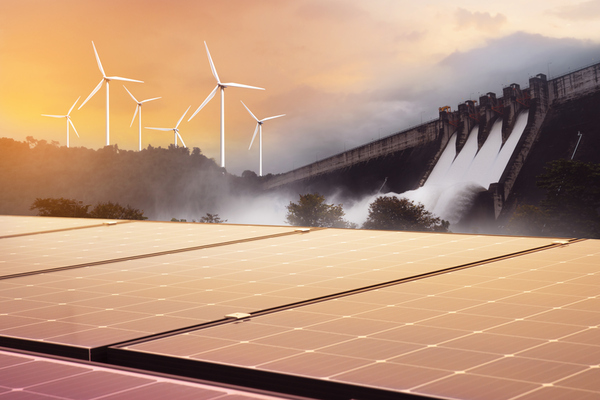
Maximizing Renewable Energy: Combining Hydro, Solar, and Wind Power in Home Inverters
In recent years, the global shift towards renewable energy sources has gained significant momentum, driven by concerns over climate change, energy security, and sustainable development. Among the most promising renewable energy technologies are solar, wind, and hydro power. Each of these sources has its unique advantages and challenges, but when combined, they can offer a more reliable and efficient energy solution. This begs the question: Can I combine hydro, solar, and wind power into my home inverter?
The short answer is yes, it is indeed possible to integrate multiple renewable energy sources into a single home inverter system. However, several factors need to be considered to ensure optimal performance, reliability, and cost-effectiveness.
Understanding the Basics
Before delving into the integration process, let's briefly review each renewable energy source:
1. Solar Power: Solar panels convert sunlight into electricity using photovoltaic cells. They are versatile, scalable, and suitable for both urban and rural settings.
2. Wind Power: Wind turbines generate electricity by harnessing the kinetic energy of the wind. They are most effective in areas with consistent wind patterns and ample space for installation.
3. Hydro Power: Hydroelectric systems generate electricity by utilizing the energy of flowing or falling water. They are highly efficient but require access to a suitable water source, such as rivers or streams.
Integration Challenges and Considerations
While combining these renewable sources sounds promising, there are several challenges to overcome:
1. Intermittency: Solar and wind power are inherently intermittent, depending on weather conditions and time of day. Hydro power, on the other hand, can provide more consistent output but may be limited by water availability.
2. Inverter Compatibility: Integrating multiple energy sources requires inverters capable of handling various input voltages and frequencies. Hybrid or multi-input inverters are designed for this purpose.
3. System Sizing and Optimization: Properly sizing the system to match energy demand and resource availability is crucial for maximizing efficiency and avoiding oversizing or under sizing issues.
4. Control and Monitoring: Advanced control systems are necessary to manage the operation of each energy source dynamically, optimizing energy production and storage.
5. Cost and ROI: While renewable energy systems can lead to long-term cost savings and environmental benefits, the initial investment can be significant. Careful financial planning and analysis of return on investment (ROI) are essential.
Benefits of Integration
Despite these challenges, integrating multiple renewable energy sources offers several compelling benefits:
1. Increased Reliability: Combining diverse energy sources helps mitigate the intermittency of individual sources, ensuring a more stable and reliable power supply.
2. Enhanced Energy Yield: By harnessing multiple renewable sources, homeowners can maximize energy production throughout the day and across different weather conditions.
3. Energy Independence: Generating electricity on-site from renewable sources reduces reliance on the grid and fossil fuels, increasing energy independence and resilience.
4. Environmental Sustainability: Utilizing clean, renewable energy sources reduces greenhouse gas emissions and environmental impact, contributing to a more sustainable future.
5. Potential for Off-Grid Living: A well-designed integrated renewable energy system, coupled with energy storage solutions like batteries, can enable off-grid living in remote or rural areas.
In conclusion, combining hydro, solar, and wind power into a home inverter system is not only feasible but also highly advantageous. While it requires careful planning, investment, and integration of various technologies, the benefits in terms of reliability, energy yield, and sustainability make it a compelling option for homeowners looking to embrace renewable energy.
As technology continues to advance and costs decline, the potential for integrated renewable energy systems to become mainstream residential solutions will only grow. By harnessing the power of nature's diverse resources, we can create a more resilient, sustainable, and equitable energy future for generations to come.
What do you think? Leave a comment.